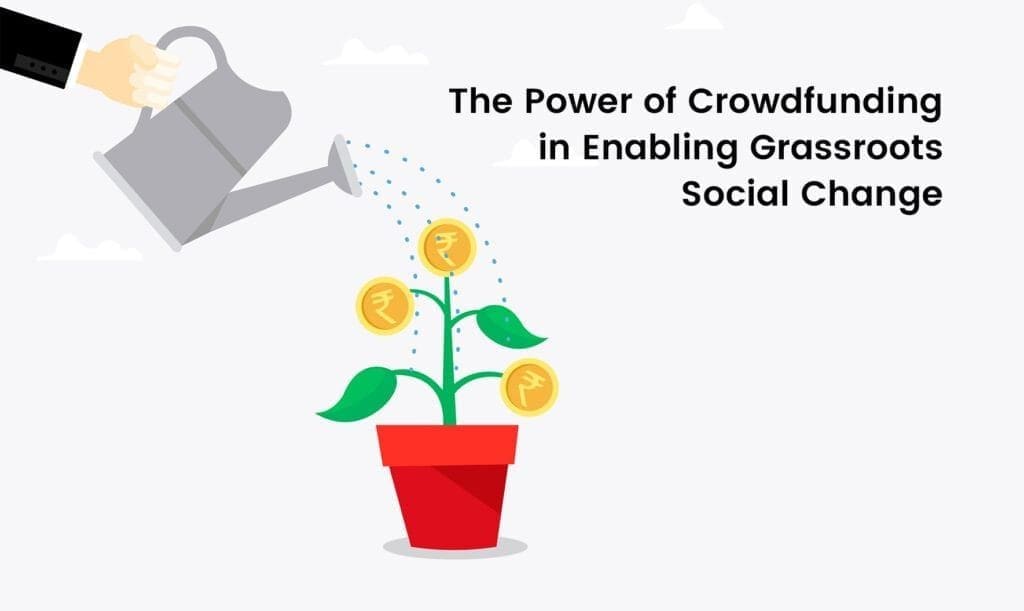In this article, you will learn about the power of crowdfunding and how it can empower ideas and dreams. Crowdfunding is a funding method where individuals contribute small amounts of money towards a project or cause. By harnessing the power of the crowd, anyone can turn their ideas and dreams into reality.
Crowdfunding allows individuals with innovative ideas or creative projects to bypass traditional channels of funding and seek support directly from the public. Whether you have a brilliant invention or a business idea that needs funding, crowdfunding provides a platform for you to share your vision with a wide audience and gather support. With the power of the crowd behind you, there are endless possibilities for bringing your ideas and dreams to life. So, let's explore how you can tap into the power of crowdfunding and make your dreams a reality.

The Power of Crowdfunding: Empowering Ideas and Dreams
Crowdfunding has revolutionized the way individuals and businesses raise funds for their projects and ventures. In this digital age, traditional funding methods such as bank loans, venture capital, and grants can be daunting and highly competitive. Crowdfunding offers an alternative approach to financing where individuals can contribute small amounts to collectively fund a project or idea. This article explores the concept of crowdfunding, its various types, benefits, strategies for success, challenges, and risks. Furthermore, we delve into the impact of crowdfunding on different industries, ethical considerations, popular crowdfunding platforms, and the future of this innovative funding method.
What is Crowdfunding?
Definition of Crowdfunding
Crowdfunding is a method of raising capital through a collective effort of a large number of people, typically via the internet. Instead of relying on a few large investors or financial institutions, crowdfunding utilizes a network of individuals who contribute small amounts of money to support a specific project or idea. This concept of “the crowd” pooling their resources has become a game-changer for many entrepreneurs, artists, non-profit organizations, and individuals with innovative ideas.
History of Crowdfunding
The roots of crowdfunding can be traced back to the 18th century when renowned writer Alexander Pope sought subscriptions from the public to finance the translation of Homer's Iliad. Over the years, the concept evolved and gained momentum with the emergence of online platforms. In 2003, ArtistShare became the first online crowdfunding platform, allowing musicians to fund their projects by offering different levels of rewards to their backers. This marked the beginning of the modern era of crowdfunding, which has since expanded to encompass various categories and industries.

Types of Crowdfunding
Reward-Based Crowdfunding
Reward-based crowdfunding is the most common type where backers contribute to a project or idea in exchange for a reward or perk. These rewards can range from a simple thank-you note or a personalized item to early access to the product or exclusive experiences. One prominent example of reward-based crowdfunding success is the Pebble smartwatch campaign. In 2012, Pebble Technology Corporation raised over $10 million on Kickstarter, offering backers early access to their revolutionary smartwatches as a reward.
Equity-Based Crowdfunding
Equity-based crowdfunding allows backers to invest in a business or project in exchange for equity or shares. This type of crowdfunding allows individuals to become shareholders in a company and potentially share in its profits if it succeeds. Equity-based crowdfunding platforms such as SeedInvest and StartEngine have opened up investment opportunities to a wider range of individuals, helping democratize the investment landscape.
Debt-Based Crowdfunding
Debt-based crowdfunding, also known as peer-to-peer lending, involves individuals lending money to a borrower who then repays the loan over a specific period with interest. This type of crowdfunding is typically used by individuals or businesses looking for alternative financing options outside of traditional banks. Through platforms like LendingClub and Prosper, borrowers can access capital, while lenders can earn interest on their investments.
Donation-Based Crowdfunding
Donation-based crowdfunding is purely based on philanthropy, where individuals contribute to a cause or project without expecting any monetary returns. This type of crowdfunding is often used to support charitable organizations, disaster relief efforts, or personal fundraisers for medical expenses or other emergencies. Popular donation-based crowdfunding platforms include GoFundMe and Indiegogo Life, which have helped raise millions for various charitable causes.
Benefits of Crowdfunding
Access to Capital for Small Businesses
One of the most significant benefits of crowdfunding is its ability to provide capital to small businesses that may struggle to secure funding through traditional avenues. Banks and investors often have strict criteria and risk assessments, making it challenging for startups or entrepreneurs with unconventional ideas to attract funding. Crowdfunding opens up possibilities for these individuals by allowing them to tap into a larger pool of potential investors who believe in their vision.
Empowering Creativity and Innovation
Crowdfunding has been a catalyst for artistic endeavors, technological breakthroughs, and innovative ideas. It empowers individuals to turn their creative passions into reality, free from the constraints and compromises often associated with conventional funding sources. This platform allows creatives to connect directly with their target audience, giving them the freedom to explore unique ideas and make their visions come to life.
Building a Supportive Community
Crowdfunding fosters a sense of community and engagement between creators and their backers. By actively involving backers in the development process, creators create a loyal and supportive community of individuals who are invested not only financially but emotionally in the project's success. This community becomes a valuable resource for feedback, word-of-mouth marketing, and continued support even after the project's completion.
Market Validation for Ideas
Crowdfunding serves as a form of market validation by allowing creators to gauge public interest in their ideas before investing substantial time and resources. By presenting their projects to the public, creators can gather feedback, assess demand, and make informed decisions on whether to proceed with the idea or make necessary adjustments. This invaluable feedback can save individuals from pursuing ventures that may not resonate with the target audience.

How Crowdfunding Works
Crowdfunding campaigns follow a series of key steps to achieve their funding goals. From establishing campaign goals to maintaining communication with backers, each element plays a crucial role in driving the success of a crowdfunding campaign.
Establishing Campaign Goals
Before launching a crowdfunding campaign, it is essential to establish clear and realistic goals. This includes determining the funding target and the purpose of the funds. Defining specific goals helps gain the trust of potential backers, who need to understand how their contributions will be utilized and what impact they can expect.
Crafting a Compelling Story
A compelling story is a cornerstone of any successful crowdfunding campaign. It is crucial to communicate the mission, vision, and unique selling points of the project in a way that resonates with the target audience. Utilizing emotive language, visuals, and personal anecdotes can help create an emotional connection and inspire potential backers to contribute.
Setting Rewards and Incentives
Creating enticing rewards and incentives is a vital component of any crowdfunding campaign. Backers need to feel motivated to contribute, and exclusive rewards or early access to the product can play a significant role in encouraging them to participate. These rewards should be tailored to the target audience's interests and be of genuine value to the backers.
Promoting the Campaign
Once the campaign is live, it is essential to generate awareness and promote it effectively. Leveraging various marketing channels such as social media, email newsletters, and influencers can help reach a wider audience. Regular updates, engaging content, and sharing success stories along the way keep backers informed and maintain their interest in the project.
Maintaining Communication with Backers
Maintaining open and transparent communication with backers is key to building trust and credibility. Regular updates on the campaign's progress, addressing inquiries promptly, and providing a platform for supporters to engage fosters a positive relationship and encourages continued support. Acknowledging backers' contributions and showing gratitude is also crucial in nurturing this relationship.
Successful Crowdfunding Strategies
Creating an Effective Video Pitch
A well-crafted video pitch can be a game-changer in capturing potential backers' attention. Videos allow creators to showcase their personality, passion, and the project's essence, creating a connection that is often hard to achieve through text alone. The video pitch should be concise, engaging, and highlight the project's unique aspects and potential impact.
Leveraging Social Media Platforms
Social media platforms have played a significant role in the success of numerous crowdfunding campaigns. Utilizing platforms like Facebook, Instagram, and Twitter to promote the campaign, engage with potential backers, and share campaign updates can significantly expand the campaign's reach and visibility. Leveraging social media influencers who align with the project's values and target audience can amplify the campaign's reach even further.
Engaging with Potential Backers
Actively engaging with potential backers can help generate excitement and build a supportive community even before the campaign launches. Responding to comments, answering queries, and genuinely engaging with potential backers' feedback not only demonstrates the project's authenticity but also fosters a connection that may encourage them to become backers.
Offering Exclusive Rewards and Perks
Creating compelling and exclusive rewards for backers can be a powerful incentive for individuals to contribute. These rewards can range from limited-edition merchandise, personalized items, or exclusive experiences related to the project. Choosing rewards that align with the target audience's interests and provide genuine value can significantly boost the campaign's success.

Challenges and Risks of Crowdfunding
While crowdfunding offers numerous benefits, it is not without its challenges and risks. Recognizing and addressing these potential pitfalls is essential for a successful crowdfunding campaign.
Managing Expectations and Fulfilling Commitments
One significant challenge lies in effectively managing expectations and fulfilling commitments to backers. Delays in delivering rewards or failing to meet promised outcomes can result in a loss of trust and damage the project's reputation. It is crucial to set realistic timelines, anticipate potential obstacles, and communicate openly and transparently with backers throughout the process.
Dealing with Potential Legal and Regulatory Issues
Different jurisdictions have varying regulations and legal requirements for crowdfunding campaigns. It is vital to familiarize oneself with these regulations, including securities laws and tax obligations, to ensure compliance. Seeking legal advice and consulting with experts in the field can help navigate the complex legal landscape and prevent potential legal pitfalls.
Protecting Intellectual Property
Revealing a unique idea or invention on a public crowdfunding platform may expose it to the risk of theft or imitation. Protecting intellectual property through patents, copyrights, or trademarks is crucial to safeguarding the project's value. Seeking legal counsel and taking appropriate measures to protect intellectual property can help mitigate these risks.
Crowdfunding Platforms
Popular Crowdfunding Platforms
Several crowdfunding platforms have emerged over the years, each catering to different industries and funding models. Kickstarter, Indiegogo, and GoFundMe are among the most well-known and widely used platforms. Kickstarter, founded in 2009, has facilitated the funding of numerous creative projects, from independent films to innovative technology products. Indiegogo, founded in 2008, offers a broad range of projects, including tech startups, social causes, and creative endeavors. GoFundMe, established in 2010, focuses on personal fundraisers and charitable causes.
Points to Consider when Choosing a Platform
When selecting a crowdfunding platform, various factors need to be considered. These include the platform's fees and pricing structure, user interface and design, available support and resources, target audience, and project compatibility. Conducting thorough research and reading reviews can help identify the platform that best aligns with the project's goals and audience.

Crowdfunding Success Stories
Pebble Smartwatch
The Pebble smartwatch is one of the most notable success stories in crowdfunding history. Launched on Kickstarter in 2012, Pebble Technology Corporation initially set a modest funding goal of $100,000. However, the campaign gained unprecedented attention and support, surpassing $1 million within 28 hours. By the end of the campaign, over 69,000 backers had pledged a total of $10.27 million, making Pebble the most funded project on Kickstarter at the time.
Oculus Rift
Oculus Rift, a virtual reality headset, created a buzz in the gaming community when it launched its crowdfunding campaign on Kickstarter in 2012. The campaign aimed to raise $250,000 to bring the immersive virtual reality experience to consumers. The response was overwhelming, with the campaign surpassing its goal within hours. Oculus Rift went on to become a disruptive force in the gaming industry, receiving further investment and eventually being acquired by Facebook for $2 billion.
Exploding Kittens
Exploding Kittens, a humorous card game created by Elan Lee, Matthew Inman, and Shane Small, shattered crowdfunding records when it launched on Kickstarter in 2015. The campaign aimed to raise $10,000 in 30 days but achieved its goal within minutes. By the end of the campaign, over 219,000 backers had pledged a staggering $8.78 million, making Exploding Kittens the most-backed project in Kickstarter history.
Coolest Cooler
The Coolest Cooler is a multi-purpose cooler equipped with features such as a blender, speakers, and USB charging ports. Launched on Kickstarter in 2014, the campaign aimed to raise $50,000 to fund production. Within 24 hours, the Coolest Cooler had surpassed its goal, eventually raising over $13 million from more than 62,000 backers. However, the project faced numerous challenges and delays in fulfilling commitments, highlighting the importance of managing expectations and delivering on promises.
Impact of Crowdfunding on Various Industries
Art and Entertainment
Crowdfunding has had a transformative impact on the art and entertainment industry. It has empowered independent artists, musicians, filmmakers, and writers to bring their creative projects to life. By bypassing traditional funding models, artists can maintain creative control and connect directly with their audience. Crowdfunding platforms have enabled projects that may have struggled to get attention from major publishers, studios, or record labels to gain recognition and support from a dedicated fanbase.
Technology and Innovation
The technology and innovation landscape has greatly benefited from crowdfunding. The ability to raise funds directly from potential consumers has helped bring groundbreaking ideas and inventions to market. Startups and entrepreneurs working on innovative technologies, such as virtual reality, wearable devices, and clean energy solutions, have leveraged crowdfunding to secure funding, gain validation, and create a loyal customer base.
Social Causes and Non-Profit Organizations
Crowdfunding has become a powerful tool for social causes and non-profit organizations. It enables individuals and organizations to rally support from a global audience for various charitable initiatives, disaster relief efforts, medical expenses, and community projects. Platforms like GoFundMe have enabled individuals to quickly mobilize funds during times of crisis, showcasing the collective power of individuals coming together to make a difference.
Ethical Considerations in Crowdfunding
Transparency and Accountability
Transparency and accountability are essential ethical considerations in crowdfunding. It is important for creators to be transparent about their intentions, plans, and use of funds. Providing regular updates on the campaign's progress, addressing concerns, and fulfilling commitments to backers in a timely manner demonstrates integrity and builds trust.
Preventing Fraudulent Campaigns
The rise of crowdfunding has unfortunately led to the emergence of fraudulent campaigns seeking to deceive unsuspecting backers. Crowdfunding platforms have implemented strict policies and verification procedures to minimize fraudulent activities. Backers should exercise caution and conduct due diligence before contributing to any campaign, ensuring that the project and creator have a credible background and track record.
Future of Crowdfunding
Emerging Trends and Technologies
The future of crowdfunding is poised to be driven by emerging trends and technologies. Blockchain technology, for example, holds the potential to enhance the transparency and security of crowdfunding transactions. Smart contracts can automate the release of funds to creators, ensuring that backers' contributions are utilized as intended. Virtual and augmented reality experiences may also play a role in enhancing the engagement and connection between creators and their backers.
Regulatory Changes and Challenges
As crowdfunding continues to grow and evolve, regulatory changes and challenges are likely to arise. Governments and regulatory bodies are actively assessing the impact of crowdfunding on traditional investment models and consumer protection. Striking a balance between allowing innovation to flourish and protecting backers from potential scams and fraud will be an ongoing challenge that regulators and industry players will need to address.
Conclusion
Crowdfunding has altered the way individuals and businesses access capital, fostering a culture of innovation, creativity, and community support. This powerful funding model has empowered individuals to turn their dreams and ideas into reality, providing opportunities that may have otherwise been out of reach. The numerous benefits of crowdfunding, such as access to finance, market validation, and community building, have made it an attractive alternative to traditional funding sources. However, it is essential to navigate the challenges and risks associated with crowdfunding to ensure a successful and ethical campaign. As the crowdfunding landscape continues to evolve, embracing emerging trends and technologies while addressing regulatory changes will shape the future of this empowering funding method.





